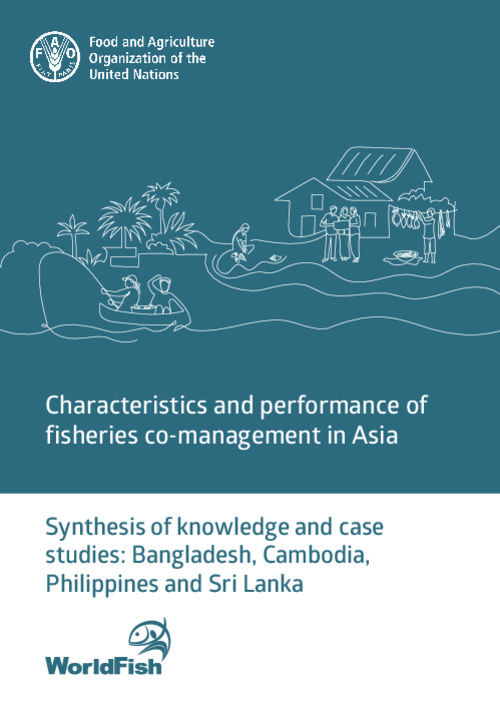Characteristics and performance of fisheries co-management in Asia; Synthesis of knowledge and case studies: Bangladesh, Cambodia, Philippines, and Sri Lanka

Collaboration between governments, NGOs, and resource custodians, users and beneficiaries is globally recognized as a foundation of fair and effective management of natural resource access and use. These collaborative forms of management, or ‘co-management’, are used around the world for managing the use of natural resources. Fisheries co-management is distinctly different from centralized governance arrangements, which is where fisheries management is designed, implemented and enforced by national or sub-national government agencies (e.g. fisheries departments, authorities or ministries). Co-management is now considered by many policies and governors as a mainstream and favoured approach for governing complex social-ecological systems like fisheries that operate within coasts, rivers, lakes, estuaries and constructed water bodies. Co-management is recognized and recommended by global fisheries commitments including the Voluntary Guidelines for Securing Sustainable Small-scale Fisheries in the Context of National Food Security and Poverty Eradication (FAO 2015).
Co-management refers to the collaborative process of fisheries governance – a collaborative arrangement between management partners (most commonly a government body) and their active support, empowerment and involvement of resource users in designing, implementing and regulating management arrangements (Pomeroy 1995, Berkes 2009).
Fisheries co-management is defined as “a partnership arrangement in which the community of local resource users (fishers) and government, with support and assistance as needed from other stakeholders (boat owners, fish traders, fish processors, boat builders, businesspeople, etc.), external agents (non-governmental organizations (NGOs), and academic and research institutions, share the responsibility and authority for the management of the fishery (Berkes et al., 2001)”
Globally there is evidence that fisheries co-management generally contributes positively toward social, economic and ecological objectives (Evans et al. 2011; Cinner et al. 2012a). However, outcomes are highly variable (i.e. not all co-managed fisheries experienced positive outcomes) and social outcomes may not be evenly distributed (i.e. some people benefited, others may have been worse off). Co-management can take many forms in terms of the fisheries, the managers and also the relationship between governing partners, and arrangements differ substantially from place to place, from fishery to fishery and through time. This flexibility in the form that co-management takes means that it is difficult to get a full picture of whether and where management is improving fisheries, improving the status of ecosystems and improving people’s lives.
The overarching objective of this report was to determine, from current evidence and experiences from the region, a series of recommendations that could guide fisheries management agencies working in Asia towards enabling better social, ecological and environmental outcomes from capture fisheries. We envisioned that recommendations could lead to improvements in policy, program and project design, and management practices. While comparability among cases was of interest, it was not a priority objective. The priority objective was to understand the diversity of co-management as it is implemented and applied in practice, and to understand if common themes in terms of strengths or challenges emerged. To achieve this objective, we approached this in four stages to help examine the diversity and efficacy of co-management as it is applied in a range of Asian contexts.
Permalink
Date Available
Type
Publisher
Countries
Copyright
CC-BY-4.0
Research Themes
Language